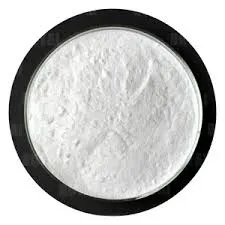
stu . 11, 2024 18:07 Back to list
use of hydroxyethyl cellulose
The Use of Hydroxyethyl Cellulose Versatility and Applications
Hydroxyethyl cellulose (HEC) is a non-ionic cellulose ether derived from natural cellulose, which is widely recognized for its unique properties and versatility in various applications. Its ability to dissolve in water and form viscous solutions makes it an essential ingredient in various industries, including pharmaceuticals, cosmetics, food, and construction.
Properties of Hydroxyethyl Cellulose
HEC is characterized by its excellent thickening, stabilizing, and film-forming properties. It is soluble in both hot and cold water, forming a clear, viscous solution that is pH-neutral, thus making it suitable for a wide range of formulations without compromising stability. HEC's non-toxic nature further enhances its value, particularly in applications where safety and compatibility are paramount.
Uses in Pharmaceuticals
In the pharmaceutical industry, hydroxyethyl cellulose is commonly used as a thickener and stabilizer in various formulations, including topical creams, gels, and ointments. Its film-forming ability helps in creating a protective layer over the skin, which is beneficial for topical drug delivery. HEC also serves as a binder in tablet formulations, ensuring uniformity and consistency in the production process. Additionally, its use in controlled-release formulations allows for the gradual release of active ingredients, enhancing therapeutic efficacy.
Applications in Cosmetics
use of hydroxyethyl cellulose

The cosmetic industry utilizes hydroxyethyl cellulose for its thickening and emulsion-stabilizing properties. It is a common ingredient in lotions, creams, and shampoos, where it helps improve texture and enhance the viscosity of products. Moreover, HEC contributes to the overall feel and performance of cosmetic formulations, providing a smooth application and a pleasant sensory experience. Its ability to retain moisture also makes it beneficial in skincare products aimed at hydration.
Food Industry Integration
In the food sector, hydroxyethyl cellulose is recognized as a food additive, often used as a thickening agent, stabilizer, and emulsifier. Its approval by regulatory bodies as Generally Recognized as Safe (GRAS) facilitates its use in various food products. HEC plays a significant role in improving the texture and mouthfeel of food items, especially in dairy products, sauces, and dressings. It also helps prevent syneresis, ensuring the stability and quality of food products during storage.
Construction Industry Applications
The construction industry has embraced hydroxyethyl cellulose due to its thickening and water-retention properties. It is commonly used in cement-based products, including mortars, plasters, and grout, where it enhances workability and adhesion. HEC's water-retaining ability reduces water evaporation, allowing for better curing conditions, which is crucial for the strength and durability of construction materials. Furthermore, its use in paints and coatings improves consistency, flow, and application properties.
Conclusion
In summary, hydroxyethyl cellulose is a versatile ingredient with a broad spectrum of applications across various industries, ranging from pharmaceuticals and cosmetics to food and construction. Its unique properties, such as thickening, stabilizing, and moisture retention, make it an invaluable component in product formulation. As industries continue to innovate and seek sustainable and efficient solutions, the demand for hydroxyethyl cellulose is likely to grow, cementing its position as a crucial material in modern formulations and applications. With ongoing research and development, the potential uses of HEC may expand further, unlocking new possibilities for this remarkable cellulose derivative.
-
The Widespread Application of Redispersible Powder in Construction and Building Materials
NewsMay.16,2025
-
The Widespread Application of Hpmc in the Detergent Industry
NewsMay.16,2025
-
The Main Applications of Hydroxyethyl Cellulose in Paints and Coatings
NewsMay.16,2025
-
Mortar Bonding Agent: the Key to Enhancing the Adhesion Between New and Old Mortar Layers and Between Mortar and Different Substrates
NewsMay.16,2025
-
HPMC: Application as a thickener and excipient
NewsMay.16,2025
-
Hec Cellulose Cellulose: Multi functional dispersants and high-efficiency thickeners
NewsMay.16,2025







